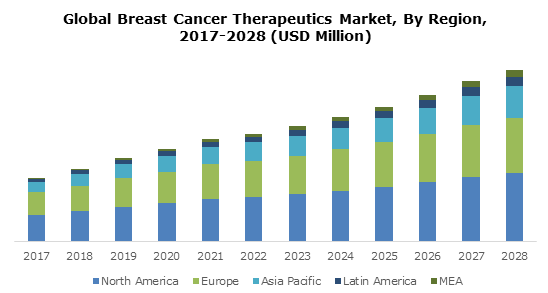Market Analysis - Breast Cancer Summit 2023

The global breast cancer diagnostics market size was valued at USD 3.9 billion in 2020 and is expected to expand at a compound annual growth rate (CAGR) of 7.0% from 2021 to 2028. The growth can be attributed to the increasing prevalence of cancer and rising government initiatives to increase the screening and diagnostic rate. The increasing incidence of breast cancer is expected to drive the market for breast cancer diagnostics. According to the American Cancer Society, in 2021, 281,550 new cases of breast cancer are estimated to be diagnosed, and around 49,290 related deaths are expected to occur in the U.S. alone. As per the WHO, in 2021, breast cancer is the most common type of cancer at a global level, with new cases surpassing 2.3 million.
Growing demand for technologically advanced products that can enable better accuracy, speed, and cost-effectiveness is likely to be the dominant growth factor over the forecast period. For instance, the introduction of Direct-To-Consumer (DTC) testing in the field of cancer diagnostics. The first DTC test, introduced in 2018 by 23andMe, received the U.S. FDA approval for BRCA testing. It is one of the first DTC tests for the BRCA gene mutations that increase the risk of breast and ovarian cancers.
Besides, the increasing reimbursement and insurance coverage are expected to increase the adoption of testing. Different tests are being approved by government agencies for nationwide reimbursement. Medicaid, Medicare, and third-party payer benefit plans in the U.S. cover the cost of genetic testing. Genetic tests, such as BRCA1 and BRCA2, are reimbursed by most health plans for individuals with a family history of cancer, which has led to an increase in the number of tests being carried out.
Early detection is a key to the effective management of the disease. It can result in improved quality of life, provide several treatment options, and increase survival rates.